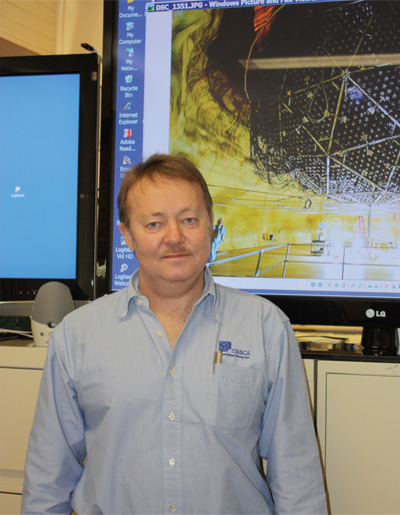 Digital technology is transforming Itasca Consulting Canada into a more efficient consulting company. With projects around the world and offices in Montreal and Toronto, the Sudbury based geomechanical consulting company is riding the wave of a booming mining industry.
Digital technology is transforming Itasca Consulting Canada into a more efficient consulting company. With projects around the world and offices in Montreal and Toronto, the Sudbury based geomechanical consulting company is riding the wave of a booming mining industry.
Itasca Consulting Canada was established in 1999 when Richard Brummer Associates joined the Minneapolis-based Itasca Consulting Group. Brummer, company president, is originally from South Africa with roots in mining research. He landed in Sudbury in the early 90s to teach geomechanics at Laurentian University. He started Richer Brummer Associates for his consulting work and merged with Itasca to establish a Canadian branch.Itasca offers integrated hydrological, geomechanics, and microseismological network consulting services to hundreds of clients around the world, including mining companies, petroleum exploration companies, civil design and construction firms, government agencies, research universities and other consulting firms.The group has grown from four to 120 engineers. Its geomechanics engineers are specialists in the field, offering expertise in deep mining problems.
“There are 14 offices in 11 different countries around the world, all working in deep mining, underground waste storage and underground science labs - basically, anything to do with very deep excavation in the earth and what happens when it fails. Most of the time, mining companies don’t like to publicize the work Itasca does for them,” said Brummer. “Not a lot of companies do what we do. We are able to predict what the stresses are in a deep mine.”
Paperless efficiency
“We work with pretty much all the big mining companies who use our software and expertise. We handle over 100 projects every year so we need to be a smooth well-oiled machine,” said Brummer. Consultants meet in cyberspace most of the time. All of the projects are “live” meaning all the company’s files are electronic and can be accessed via the Internet from anywhere in the world. Staff are all connected on a network set up in the Sudbury office that allows the Montreal and Toronto offices to tap into files and video meetings.
A web application called GoToMeeting (www.gotomeeting.com) is used to hold videoconferences. Although set up for Itasca’s to use, they can invite clients to participate from anywhere in the world. Some clients have adopted the application for their own use. With their files live, they can also share presentations and reports during the meeting using this technology.
Their projects are across the globe in Brazil, Finland, China, Africa and Canada, so the ability to save money and time on travel creates far more efficiency.
From their Montreal office, Dr. Patrick Andrieux is able to access the main calendar with the 12 Canadian engineers’ whereabouts. One of Andrieux’s projects is reopening a dormant gold mine in Abitibi, Quebec. He is able to include colleagues from the Sudbury and Toronto locations on the project without anyone having to leave their office.
“We are much more efficient with this technology. We are all working on the same computer system no matter where we are,” said Andrieux.
Digital technology
Brummer has used photography in his work for many years and today uses digital photographs with computer technology. “When they send a surveyor in to pick up points, we can do that with stereo photographs (pairs), and recreate the geometry from the photos,” explained Brummer. Using digital cameras that capture every detail allows for incredible accuracy.
“Digital photography will capture rock before being covered with shotcrete allowing geologists to determine the different rock types and measure joint angles without being in the mine.
Itasca bought a software system from Austria and adapted it for underground. The company has also used this technology to repair buildings. They videotape the building and then the architect makes a 3D model. “It also works well in underground mines and open pits.”


